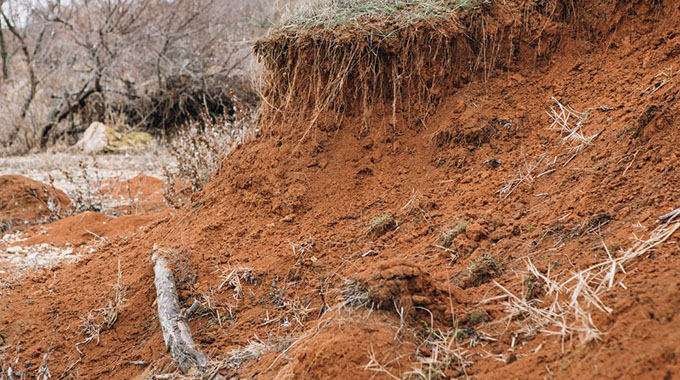
Sifelani Tsiko
Agric Editor
Zimbabwe must take wide-ranging steps to raise public awareness on desertification and land degradation to help combat desertification and the effects of drought, a senior UN Food and Agricultural Organisation (FAO) official has said.
FAO sustainable natural resources management specialist Mr Barney Mawire told a virtual meeting to commemorate the Desertification and Drought Day which was held recently that promoting public awareness of the issue was important in safeguarding the country’s natural resources.
“We must as a country let people know that desertification and drought can be effectively tackled, that solutions are possible and that key tools to this aim lie in strengthened community participation and cooperation at all levels,” he said.
“With the perennial dry conditions that we experience as a country, we are struggling with wildfires that have destroyed large tracts of land and damaged the soil. All this gives the right conditions for turning parts of the country into mini deserts. We need to continue educating the masses about the risk that come with desertification.”
Zimbabwe is a signatory to international agreements under the United Nations Convention to Combat Desertification (UNCCD).
The convention seeks to strengthen implementation of the UNCCD programmes in those countries experiencing serious drought and desertification, particularly in Africa.
“Integrated forest and land planning and monitoring, as well as sustainable soil management, have an enormous potential to create synergies with climate change, Covid-19 recovery and poverty reduction goals in the context of global land restoration efforts, including in the world’s drylands and salt affected areas,” Mr Mawire said.
“At a webinar to mark the Desertification and Drought Day, we explored ways to support the decision-making and monitoring of restoration activities for healthy lands.”
In 2020, the country recorded more than 1 000 wild fires spreading over 1 million hectares of both arable land and forest cover, according to Zimbabwe’s Environmental Management Agency (EMA).
Zimbabwe loses more than 330 000 hectares of forests through forest fires and deforestation annually, according to the Forestry Commission.
The UNCCD describes desertification as “land degradation in arid, semi-arid and dry sub-humid areas resulting from various factors including climatic variation and human activity.”
Experts say it affects the livelihoods of rural people in drylands, particularly the poor, who depend on livestock, crops, limited water resources and fuel wood.
According to the FAO, one-quarter of the global land area is already affected by land degradation to some degree, to which around 12 million hectares are added every year.
The Desertification and Drought Day is held every year on 17 June.
The UN agency says among agricultural lands, this reaches the worrying proportion of around half, with annual soil losses of around 17 billion tonnes of arable land and annual economic costs estimated at US$490 billion.
Further findings suggest concomitant losses in the global value of ecosystem services of around US$ 6,3 trillion each year, equivalent to almost three times the economic value of global agricultural production.
“Land that is healthy and resilient is the first point of defence against disasters such as droughts and flash-floods, which are becoming more frequent, long and severe,” said Mr Mawire.
“The loss of more and more productive land is creating growing competition for land to meet the growing demand for goods and services and for ecosystem services that support life. The next few decades will be the most critical in restoring land for a sustainable future.”
Tackling problems such as land degradation, climate change and biodiversity loss is key to achieving many of the Sustainable Development Goals, including the country aspirations to attain an upper middle income economy by 2030.
Zimbabwe has made commitments to achieve land degradation neutrality (LDN) by 2030 and also restore 10 percent or up to 4 million hectares of forests.
